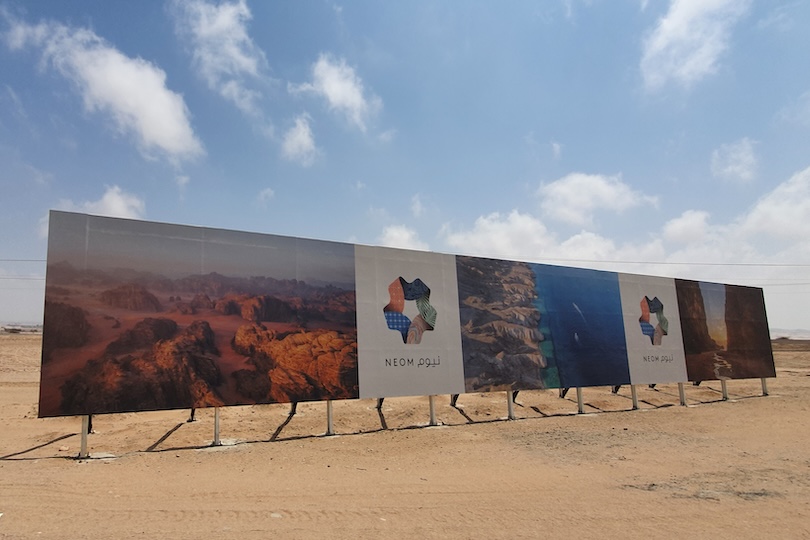The tiny microstate of San Marino, enclaved entirely within Italy, embodies a strong nationalist tradition. Despite there being relatively few academic efforts to introduce the country to a global audience, Veenendaal (2015: 71) highlights the cultural fervour of its 34,000 inhabitants, noting that ‘on the corner of almost every street, tribute is being paid to the well-documented Sammarinese history and its accompanying heroes’. This national identity aligns closely with a set of intersecting ideals: popular sovereignty, constitutional liberalism, and territorial independence (Catudal Jr. 1975). Descriptions of San Marino’s past often frame it as a narrative of democratic exceptionalism, a timeless struggle for liberty. Central to this narrative is the legendary founding of the state by Saint Marinus, a Christian stonecutter fleeing Roman persecution in 301 AD. This founding myth is frequently invoked both internally and externally, reinforcing San Marino’s identity as ‘the ancient land of freedom’ and ‘the oldest republic in the world’ (Veenendaal 2015: 70).
In this piece, I will briefly examine Sammarinese nationalism through two empirical frameworks: ethnosymbolism and modernism. A central debate between these two schools of thought in nationalism studies concerns the issue of social continuity. Ethnosymbolists argue for reconciling modern developments with an emphasis on the pre-modern origin of nations, observing ethnic ties within a long-term historical context (la longue durée) (Guibernau 2004). By contrast, modernists adopt a more rigid perspective, arguing that nations and nationalisms have become sociological necessities in the modern world but had no place in the pre-modern era. This divide is apparent in the types of evidence each perspective prioritises: ethnosymbolism focuses on myths, symbols, and traditions (Smith 2001), while modernism emphasises materialist processes such as capitalism, industrialisation, and the rise of the modern bureaucratic state (Özkirimli 2010).
Who is the Sammarinese Nation?
To understand the Sammarinese nation, we must first explore its composition and character. Ethnosymbolist Anthony D. Smith (1991: 21) contends that pre-national ethnic groups, or ethnies, possess ‘a collective proper name, a myth of common ancestry, shared historical memories [and] one or more differentiating elements of a common culture’. In this context, San Marino’s ethnie can be described as a ‘coalescence ethnie’, as the nation’s demographic formation resulted from historical expansion and assimilation (Özkirimli 2010). The last territorial additions occurred in 1463 when the villages of Faetano, Fiorentino, Montegiardino, and Serravalle were integrated into the polity (Catudal Jr. 1975).
As previously noted, the most prominent manifestation of Sammarinese identity is the promotion of political liberties, expressed not only to outsiders (most famously to honorary citizen Abraham Lincoln) but also through public monuments. The most visible of these is the Statua della Libertà outside the country’s legislature, the Grand and General Council (Veenendaal 2015). The ethnosymbolist lens is useful here, as the ancient myth of Saint Marinus escaping despotic rule and establishing a pious community continues to be portrayed as the origin of the democratic character that nominally distinguishes the Sammarinese people (Sundhaussen 2003). This enduring narrative underscores the crucial role of collective memory and symbolism in maintaining San Marino’s national identity, further supporting Smith’s (1986: 16) view that ‘ethnies, once formed, tend to be exceptionally durable’.
The idea that a Sammarinese ethnie acted as a precursor to its nationalism challenges the notion that the latter is a purely recent phenomenon. However, any modernist critique of this perspective would likely focus on the extent to which social engineering has influenced the territory’s collective identity, with historians dismissing the veracity of the Marinus legend (Duursma 1996). Eric Hobsbawm’s (1983: 303) concept of ‘invented traditions’ is particularly relevant here in light of his observations about the ‘mass production of public monuments’, a common practice historically used by European states to consolidate political unity.
Nevertheless, an ethnosymbolist view can well respond to this criticism, especially with respect to San Marino. Indeed, the concept of invented traditions does not undermine the value of focusing on cultural markers in understanding the creation of national identities. As Hutchinson (1987) argues on this point, the contemporary social impact of these symbols is more important than their literal historical accuracy. Furthermore, in our case, Sundhaussen (2003: 215) observes that ‘myths, if they are accepted by the people, form orientations regardless of whether they can be historically verified; it was the myths of the egalitarian teachings of Marino … which created a craving for liberty among the simple peasants of the republic’. Despite its romanticism, this symbol of San Marino has had tangible consequences for the nation-state. For instance, well into the 20th–century, the Sammarinese offered asylum to refugees of any and all political persuasions, demonstrating the enduring relevance and practical application of this central aspect of their national identity (Sundhaussen 2003).
Why and how did the Sammarinese nation emerge?
On the other hand, modernist theorist Brendan O’Leary (1996: 90) might argue that nation-building in San Marino is a superficial form of ‘retrospective nationalism’. From this perspective, ethnic entrepreneurs would use Sammarinese cultural traditions to construct and promote an essentially confected sense of belonging. This connects to our second theme: exploring the reasons behind and the process by which the Sammarinese nation emerged.
While O’Leary’s theory is relevant in some contexts, such as the Catalan and Irish nationalist movements of the early to mid-20th–century (movements inspired by a small group of historians and artists), the situation in San Marino differs. Specifically, the decline of the ancient Sammarinese language does not follow this pattern (Hutchinson 1987). As Montanari (2018) opines, nation-building efforts in the microstate are presently hindered by a general failure to address the role of the Sammarinese language in its national identity, and policymakers have neglected it to the point of endangerment by failing to document its features. Still, modernists are right to point out the key role of other material factors, such as defence arrangements and economic industrialisation, in sustaining a nation’s political distinctiveness. Regarding defence, Hall (1995) highlights how security concerns can foster national consciousness, which links directly to San Marino insofar as Bartmann (2008: 361) notes that ‘the most pertinent question attending the sovereignty of microstates is the issue of security’. Rather than relying on subjective communal notions of self-determination, San Marino has employed pragmatic diplomacy to maintain its territorial separateness, forming alliances and leveraging international norms. Notable Sammarinese measures include maintaining neutrality during World War II and its longstanding relationship with Italy, which preserved its independence during the 19th–century Risorgimento and has guaranteed it total military support since the two states’ 1939 Treaty of Friendship (Duursma 1996).
The role of economic industrialisation presents a more complex picture. Until the late 20th–century, San Marino, despite its strong sense of nationhood, remained largely agrarian, with limited urbanisation and a weak economy. This isolation kept it from experiencing the modernisation seen in the neighbouring Italian region of Romagna (Montanari 2018). This challenges modernist Benedict Anderson’s (1991: 38) theory of ‘print capitalism’, which suggests that the spread of a standardised language, driven by industrialisation, was the primary cause of national formation in Europe. While I suggest that San Marino was a nation by the time of the Industrial Revolution, its population was also largely illiterate and unentrepreneurial (Montanari 2018). This situation is echoed by the view of early 19th–century Sammarinese statesman Antonio Onofri, who argued, ‘only in poverty and insignificance could San Marino hope to maintain herself free and sovereign through the centuries’ (quoted in Sundhaussen 2003: 216). However, modernism’s emphasis on economic transformation has become more relevant in recent times. Today, San Marino has established itself as a financial haven, with its GDP per capita surpassing that of most Western countries, partly due to its exemption from EU regulations. In 2008, it was even placed on the OECD’s ‘black list’ for harmful tax practices (Veenendaal 2015). This fiscal niche has further affirmed and strengthened its national independence, both legally and economically (Armstrong & Read 1995).
The Sammarinese national identity also aligns with modernist Ernest Gellner’s (1983: 61) concept of ‘cultivated’ or ‘garden’ cultures, by which he refers to nations formed by small groups with high social mobility and migration. Around 12% of San Marino’s population are Italian citizens, partly due to labour demands across Europe’s microstates (Caldwell, Harrison & Quiggin 1980; Veenendaal 2015). While modernism offers insights into San Marino’s economic changes, it does not fully explain the continuity of its national character. In contrast to Elie Kedourie’s (1994) view that nationalism emerges from the collapse of pre-modern institutions, I argue that it is the preservation of their ideals that has nurtured Sammarinese nationalism. A key example is the cultural memory of the Arengo, a plebiscitary body of patriarchs active from the 5th–century until 1243. This body directly influenced the current Grand and General Council, which upholds the Arengo’s principles of direct democracy through regular referenda and proportional representation (Sundhaussen 2003).
When and where did the Sammarinese nation emerge?
Having referenced pre-modern phenomena, it now seems logical to hypothesise the final of our themes: the when and where of the Sammarinese nation’s emergence. Starting with the latter, we might consider Anderson’s (1991: 6) well-known belief that a defining feature of a nation is its inherent limitation, that most members of it will never meet each other. This, however, proves problematic for San Marino, where its relatively miniscule population makes it highly likely that one could meaningfully encounter a larger proportion of one’s fellow citizens, thus questioning the notion of a distant, ‘imagined community’. Given this issue, there could be a temptation to rely more on ethnosymbolism to determine when a Sammarinese identity began. However, I argue that some scholars overlook the essential continuity in this process. For example, ethnosymbolist Armstrong (1995: 35, 282) asserts that ‘nationalism originated … no earlier than the fifteenth century’ and that ‘the significance of language for ethnic identity is highly contingent’.
Regarding San Marino, I find this approach insufficient for two reasons. First, historical evidence suggests that by the late 13th–century, San Marino was already recognised as a political entity with special territorial rights, such as exemption from feudal tribute to the Bishop of Montefeltro (Stiles 2018). Duursma (1996) argues that the papacy’s favourable approach was a deliberate effort to accommodate the Republic’s pre-existing tradition of sovereignty, exemplified by institutions like the Arengo, where decisions were made democratically with every head of family participating (Sundhaussen 2003). My second objection to Armstrong’s position concerns his dismissal of the role of language in the formation of a nation. Here, I argue that he deviates from Smith’s invocation of the ethnie and from the historicism central to ethnosymbolism. In the case of San Marino, Montanari (2018) shows that the Sammarinese language has been the dominant vernacular for nearly a millennium. Its distinctive phonological, lexical, and grammatical features have played a crucial role in shaping the cultural and political fabric of the community. If one accepts that a distinctive language has a strong social impact, it makes sense to explore the pre-modern ethnic influences that led to the formation of these linguistic features in the first place (Smith 1991).
With influences ranging from Byzantine Greek to Celtic, Germanic, and Lombardic, the Sammarinese language stands apart. This uniqueness suggests that the territory’s exclusive vernacular significantly helped to shape Sammarinese nationhood (Montanari 2018). In this way, these linguistic markers can help answer both the when and where of the nation’s origin, tracing the evolution and geographic spread of the microstate’s cultural indicators.
Conclusion
This piece has sought to concisely characterise the composition, existence, and lifespan of the Sammarinese nation through the competing ethnosymbolist and modernist approaches to the study of nationalism. Influenced by Anthony D. Smith, I have argued for the existence of a distinct ethnie within San Marino, one that is expectant of political liberties and united by collective memories of an ancient past. Dissenting modernist theorists, who emphasise the pre-eminence of invented traditions, were shown to misinterpret the source of their importance, not as empirical truths, but as significant cultural myths. Following this, in attempting to explain the inception and survival of its nationalism, San Marino was found to conform to theories from both approaches. I argue that while its inception is better explained by ethnosymbolist notions of historic continuity, the nation’s survival is more closely linked to the advent of modernity.
Finally, I considered the historical and spatial circumstances surrounding the Sammarinese, identifying them as an outlier in relation to modernist conceptions of imagined communities, and demonstrating how a failure to consider la longue durée unfairly alienates San Marino as a polity with complex pre-modern ties. Taken together, I must therefore conclude that ethnosymbolism is the preferable framework for understanding the peculiar Sammarinese case.
References
Anderson, Benedict (1991). Imagined Communities: Reflections on the Origin and Spread of Nationalism. 2nd ed. New York: Verso Books.
Armstrong, John (1995). ‘Towards a Theory of Nationalism: Consensus and Dissensus’ in Periwal, Sukumar (ed.). Notions of Nationalism. Budapest: Central European University Press. pp. 34–43.
Armstrong, Harvey W. & Read, Robert (1995). ‘Western European Micro-States and EU Autonomous Regions: The Advantages of Size and Sovereignty’. World Development, 23(7), pp. 1229–45.
Bartmann, Barry (2008). ‘Meeting the Needs of Microstate Security’. Commonwealth Journal of International Affairs, 91(365), pp. 361–74.
Caldwell, John C., Harrison, Graham E. & Quiggin, Pat (1980). ‘The Demography of Micro-States’. World Development, 8(12), pp. 953–62.
Catudal Jr., Honoré M. (1975). ‘The Plight of the Lilliputians: An Analysis of Five European Microstates’. Geoforum, 6(3–4), pp. 187–204.
Duursma, Jorri C. (1996). Fragmentation and the International Relations of Micro-States: Self-Determination and Statehood. Cambridge: Cambridge University Press.
Gellner, Ernest (1983). Nations and Nationalism. Ithaca, NY: Cornell University Press.
Guibernau, Montserrat (2004). ‘Anthony D. Smith on Nations and National Identity: A Critical Assessment’. Nations and Nationalism, 10(1–2), pp. 125–41.
Hall, John A. (1995). ‘Nationalisms, Classified and Explained’ in Periwal, Sukumar (ed.). Notions of Nationalism. Budapest: Central European University Press. pp. 8–33.
Hobsbawm, Eric (1983). ‘Mass-Producing Traditions: Europe, 1870–1914’ in Hobsbawm, Eric & Ranger, Terence (eds.). The Invention of Tradition. Cambridge: Cambridge University Press. pp. 263–308.
Hutchinson, John (1987). ‘Cultural Nationalism, Elite Mobility and Nation-Building: Communitarian Politics in Modern Ireland’. British Journal of Sociology, 38(4), pp. 482–501.
Kedourie, Elie (1994). Nationalism. 4th ed. Oxford: Blackwell Publishing.
Montanari, Simona (2018). ‘Sammarinese, the Endangered Language of the Republic of San Marino: A Preliminary Study of Documentation and Description’. Dialectologia et Geolinguistica, 26(1), pp. 57–95.
O’Leary, Brendan (1996). ‘On the Nature of Nationalism: An Appraisal of Ernest Gellner’s Writings on Nationalism’ in Hall, John A. & Jarvie, Ian (eds.). The Social Philosophy of Ernest Gellner. Amsterdam: Rodopi. pp. 71–112.
Özkirimli, Umut (2010). Theories of Nationalism: A Critical Introduction. 2nd ed. Basingstoke, Hampshire: Palgrave Macmillan.
Smith, Anthony D (1986). The Ethnic Origins of Nations. Hoboken, NJ: John Wiley & Sons.
Smith, Anthony D. (1991). National Identity. Reno, NV: University of Nevada Press.
Smith, Anthony D. (2001). Nationalism: Theory, Ideology, History. Cambridge: Polity Press.
Stiles, Kendall W. (2018). Trust and Hedging in International Relations. Ann Arbor, MI: University of Michigan Press.
Sundhaussen, Ulf (2003). ‘Peasants and the Process of Building Democratic Polities: Lessons from San Marino’. Australian Journal of Politics and History, 49(2), pp. 211–21.
Veenendaal, Wouter P. (2015). Politics and Democracy in Microstates. London: Routledge.

 Movie
Movie 2 months ago
54
2 months ago
54 




![Presidents Day Weekend Car Sales [2021 Edition] Presidents Day Weekend Car Sales [2021 Edition]](https://www.findthebestcarprice.com/wp-content/uploads/Presidents-Day-Weekend-car-sales.jpg)



 English (United States)
English (United States)